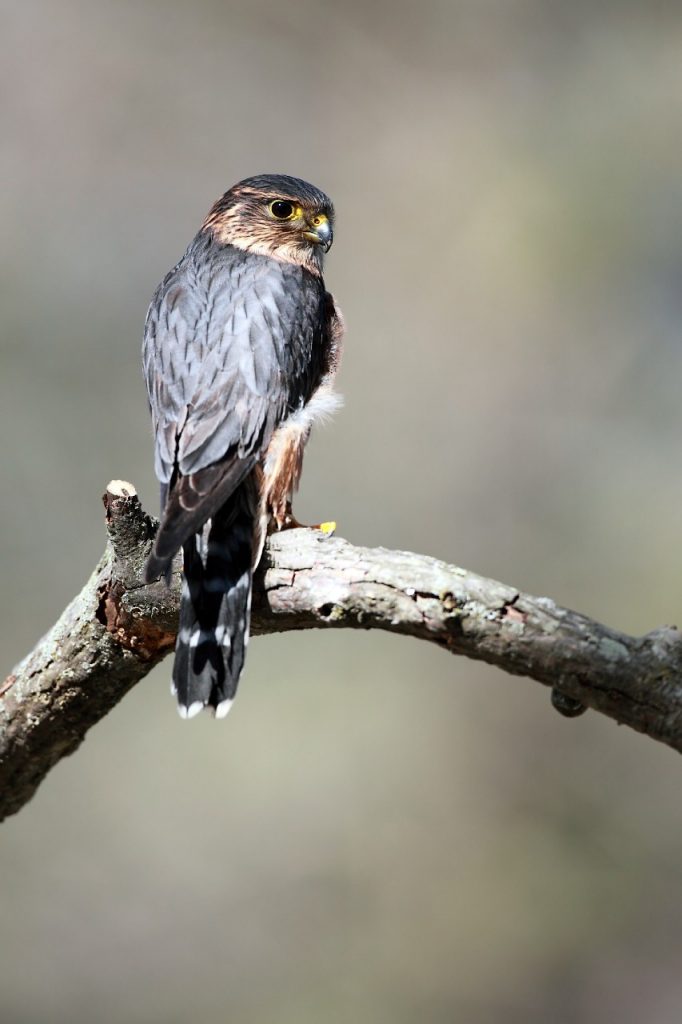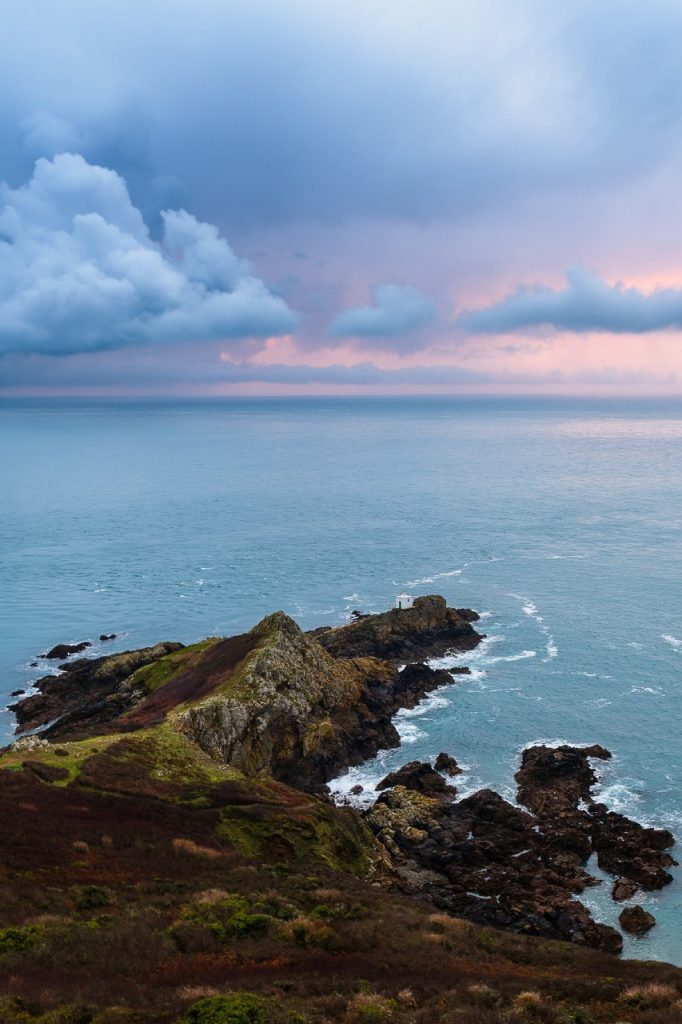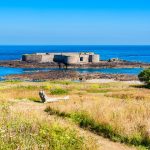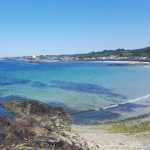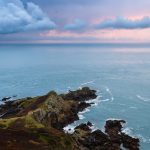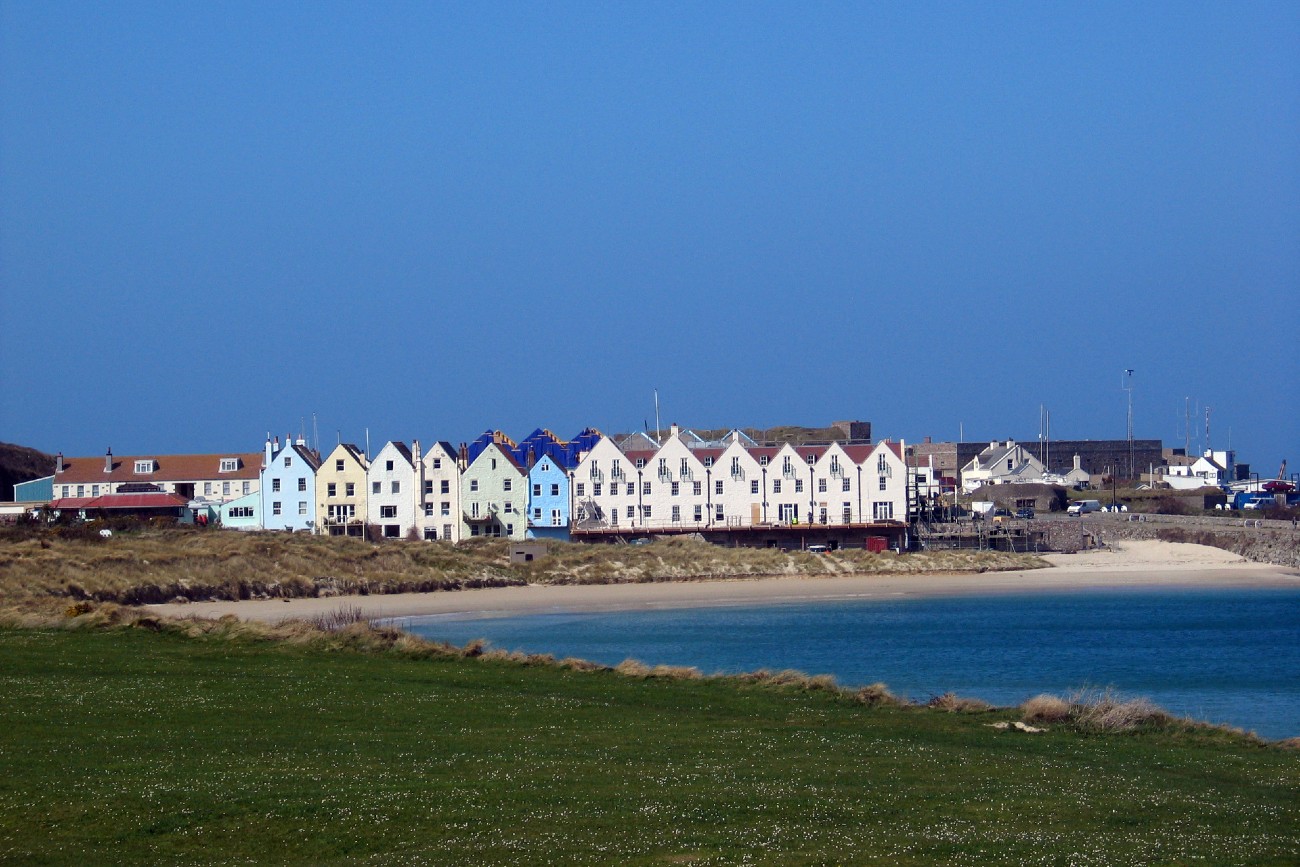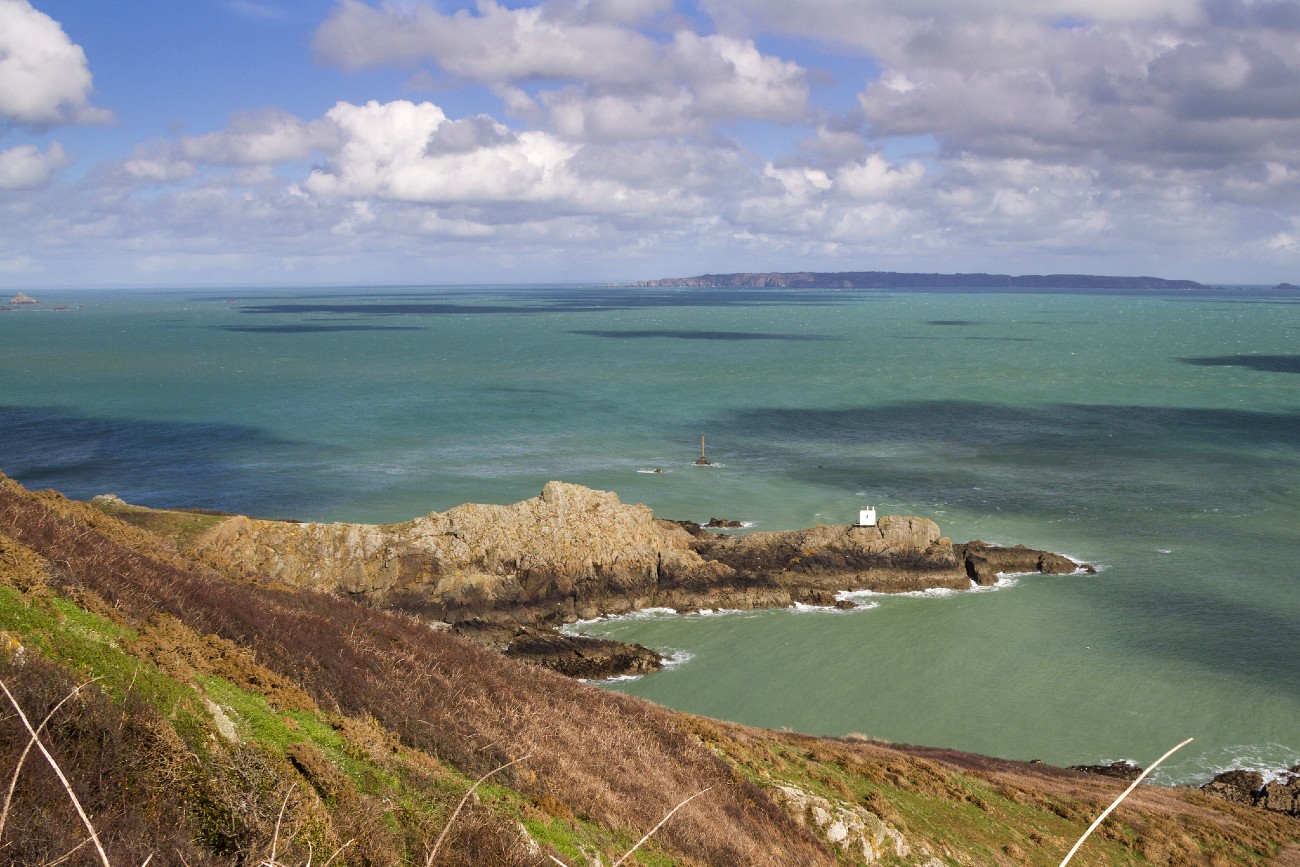
Guernsey’s south coast is wild and rugged, and portrays a remoteness that is a reminder of the Channel Island’s isolation in the ocean.
For this reason, the region is great for walking and there are over twenty miles of footpaths to explore. At the south-eastern corner – lying within St Martin Parish – the landscape juts out into the English Channel to form a peninsular known as Jerbourg Point.
Jerbourg Point in Guernsey marks the turning point of its coastline, where the eastern coast turns abruptly southwards, and it arguably has some of the best views on the entire island. If you enjoy hiking as much as I do, you will fall in love with this place. It’s thought that humans have lived on Jerbourg Point for thousands of years, with pottery and arrow heads being found on the headland that can be dated to as far back as the Neolithic era.
In more recent times, two WWII bunkers were constructed at the point and these still stand today, offering an interesting historical perspective on the region. There is also a monument built to honour Sir John Doyle, former governor of Guernsey, to recognise his contribution to the island’s infrastructure. Demolished by the Nazis during the war, it was replaced in 1953.
Set against a fantastic backdrop, these examples of Guernsey’s heritage stand above the dramatic cliffs that characterise the peninsular.
If visiting on a clear day, you’re guaranteed incredible views out over the narrow channel of Little Russell towards Guernsey’s sister islands of Herm, Brechou and Sark. If you’re lucky, you may even be able to see the French coast.
Jerbourg Headland Walk
Guernsey’s southern coast path takes a circular route around Jerbourg Point, making it one of the most popular walks on the island. With its rocky landscape and azure sea, it offers some great photo opportunities, so you might not want to forget your camera if you’re planning a walk here.
Along with the views of the other Channel Islands, the point’s unique geology has given rise to the formation of several large sea stacks, known collectively as Les Tas de Pois d’Amont (The Pea Stacks).
These steep cliffs are an important breeding sight for a variety of seabirds, especially gulls. They are especially busy with birdlife during late spring into summer, when the point will echo with the sounds of hundreds of nesting animals.
One of the WWII bunkers is now used by the RSPB as a bird hide, evidence of how good Jerbourg Point is for seeing wildlife.
It’s not just seabirds that can be seen, keep an eye out for small birds of prey called Merlins, which are often sighted in the area.
If following the cliff path around the wider peninsular, there are a series of beaches to explore. The two bays at Petit Port and Moulin Huet offer secluded stretches of sand that are well worth the effort of descending the steep steps down to them.
The other side of the headland is the site of Marble Bay – another beautiful beach that also has a number of caves to be explored. The summer months are often the best time to visit the Jerbourg Peninsula, when the green vegetation comes alive with the colours of several thousand wildflowers.
- Merlin – the bird of prey at Guernsey
- Beautiful scenery at Jerbourg point in Guernsey
Extreme Fishing
The landscape of the Jerbourg Peninsula is an excellent place to see some of Guernsey’s wildlife.
A real gem of a destination for birdwatchers in particular, one of the most interesting species to grace the skies around the headland is the Northern Gannet.
A large seabird, this species is easily recognisable by its streamlined body and the yellow plumage around its head. The Channel Islands are a very important breeding site for Gannets, with Alderney being home to a whopping 2% of the world’s population. The nests here can be incredibly raucous, but the Gannets will often range across the other islands in search of food, regularly being seen on the eastern shores of Guernsey. Being migrant birds, they visit the Channel Islands during February and October, moving further south for the winter months.
Gannets are perhaps most spectacular to see while feeding, when their streamlined bodies come into play.
Scanning the seas from the air, they drop into steep dives when they spot shoals of fish near the surface, reaching speeds of 60 mph.
Just before they hit the water, they tuck their wings in and form an almost perfect arrow shape, ensuring they slice through the water with ease. This way, they take the fish completely by surprise. The impact of hitting the water at such high speeds is no mean feat and the birds have numerous air sacs around their wing muscles to act as cushions.
With opportunities to see such impressive wildlife sights, Jerbourg Point can be an excellent place for a day out on Guernsey’s coast. And as it provides some of the best scenery on the island, the peninsula is a must-see for anyone with an affinity for the outdoors.
The Island of Guernsey has much more to offer. Don’t miss the local cuisine: Discover the Mouthwatering Cuisine of Guernsey

